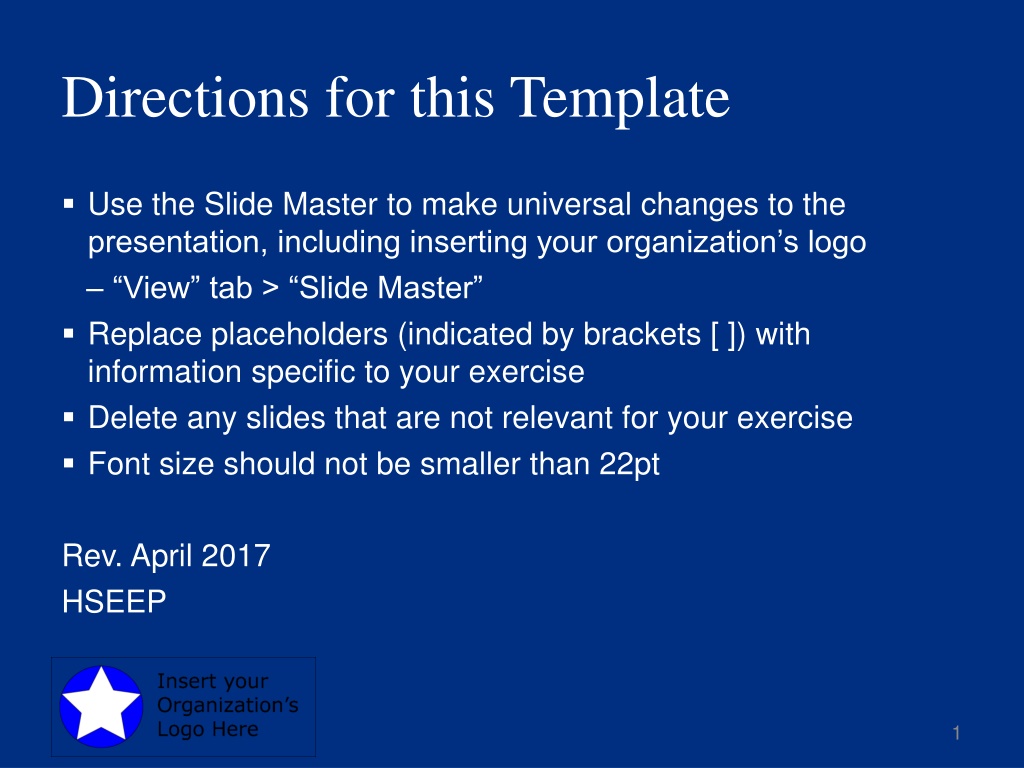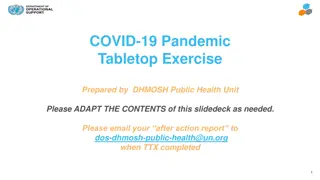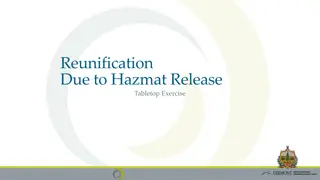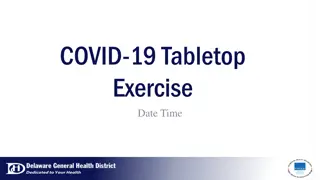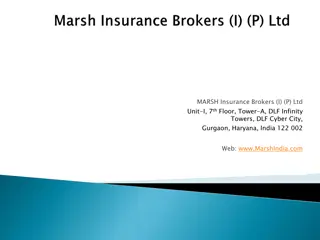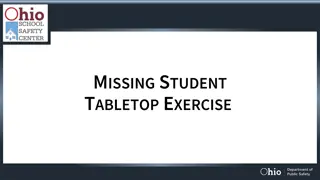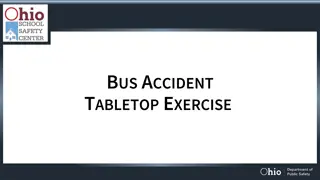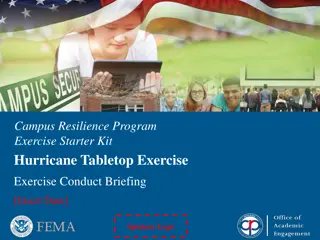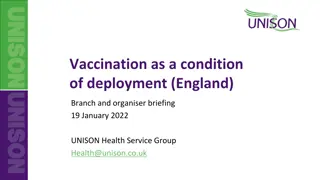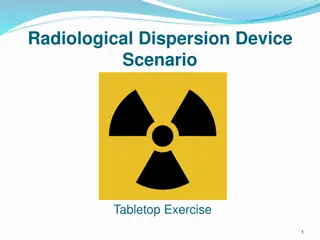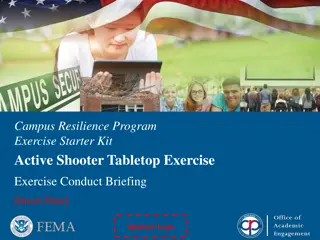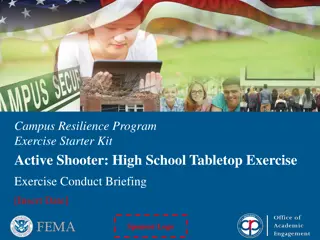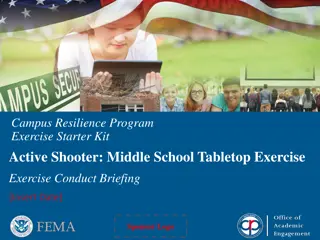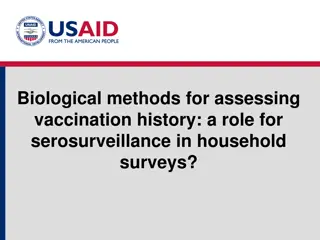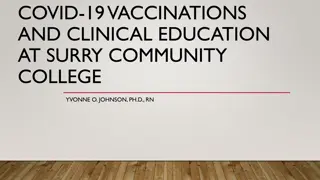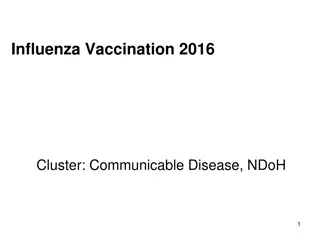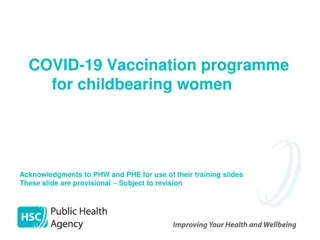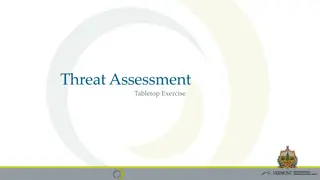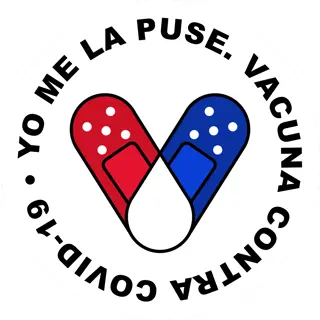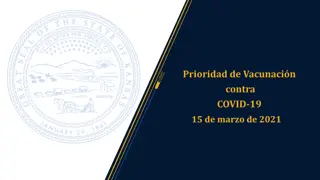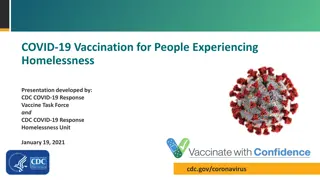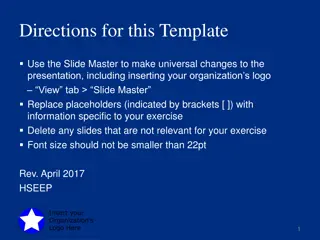Local COVID-19 Vaccination Tabletop Exercise Briefing
This presentation provides a detailed briefing for a tabletop exercise focused on the local COVID-19 vaccination campaign. It covers key aspects such as exercise schedule, objectives, purpose, and operational security. Participants will review the vaccination campaign plan, discuss support needed upon vaccine availability, and address equity in vaccine allocation decisions. The exercise aims to enhance stakeholder knowledge and validate preparedness for the vaccination campaign.
Download Presentation

Please find below an Image/Link to download the presentation.
The content on the website is provided AS IS for your information and personal use only. It may not be sold, licensed, or shared on other websites without obtaining consent from the author. Download presentation by click this link. If you encounter any issues during the download, it is possible that the publisher has removed the file from their server.
E N D
Presentation Transcript
Directions for this Template Use the Slide Master to make universal changes to the presentation, including inserting your organization s logo View tab > Slide Master Replace placeholders (indicated by brackets [ ]) with information specific to your exercise Delete any slides that are not relevant for your exercise Font size should not be smaller than 22pt Rev. April 2017 HSEEP 1
Local COVID 19 Vaccination Tabletop Exercise Facilitator/Evaluator Briefing [Date]
Welcome and Overview [Name] [Title (e.g., Exercise Director or Lead Planner)] [Organization] Administrative Items/Safety Exits Restrooms Rally Point Cell Phones 3
Operational Security This briefing contains exercise and operational material that must be safeguarded. The materials in this briefing are categorized as For Official Use Only.
Exercise Schedule Time Activity [Month Day, Year] 00:00 00:00 00:00 00:00 00:00 00:00 00:00 00:00 00:00 00:00 Registration Welcome and Opening Remarks Module 1: Briefing, Caucus Discussion. and Brief-Back Break Module 2: Briefing, Caucus Discussion, and Brief-Back Lunch Module 3: Briefing, Caucus Discussion, and Brief-Back Break Hotwash Closing Comments 5
Exercise Overview Exercise scope: Exercise Type: Tabletop Exercise Duration: Location: Exercise Parameters: Mission area(s): Response
Exercise Purpose The purpose of the Local COVID 19 Vaccination Tabletop Exercise is to provide an opportunity for Local Health Districts and partners and stakeholders to review the Local Draft Vaccination Campaign Plan, examine and discuss support needed to execute the current vaccination strategy when a vaccine becomes available and to discuss equity in vaccine allocation decisions. 7
Objectives Increase stakeholder knowledge of the local COVID 19 Vaccination Campaign Plan and their roles to support execution of the plan upon arrival of COVID vaccines in the Commonwealth. Validate support needed to counter Preparedness Gap Analysis estimates in accordance with the COVID 19 Vaccination Campaign Plan. Assess the partners Support requirements for the phases of the Vaccination Campaign Strategy in accordance with the Vaccination Campaign Plan. 8
Objectives (Cont.) Evaluate the ability of INSERTlocality Logistics Section to provide facilities, services and support in support of vaccination distribution in accordance with established plans, policies and procedures. Demonstrate the ability of the Public Information Officer to deliver coordinated, prompt and actionable incident information in response to the distribution of vaccine in locality in accordance with existing plans, policies and procedures. Demonstrate the ability of the INSERTlocality to coordinate the management of vaccination distribution operations within locality in accordance with existing plans, policies and procedures. 9
Capabilities Public Health Preparedness Capability Community Preparedness Medical Countermeasure Dispensing and Administration Healthcare Preparedness Capability Foundation for Healthcare and Medical Readiness Healthcare and Medical Response Coordination DHS Core Capability Planning Operational Coordination Emergency Public Information and Warning Logistics and Supply Chain Management 10
Participant Roles and Responsibilities Players: Players are personnel who have an active role in discussing or performing their regular roles and responsibilities during the exercise. Players discuss or initiate actions in response to the simulated emergency. Observers: Observers do not directly participate in the exercise. However, they may support the development of player responses to the situation during the discussion by asking relevant questions or providing subject matter expertise. Facilitators: Facilitators provide situation updates and moderate discussions. They also provide additional information or resolve questions as required. Key Exercise Planning Team members also may assist with facilitation as subject matter experts (SMEs) during the exercise. Evaluators: Evaluators are assigned to observe and document certain objectives during the exercise. Their primary role is to document player discussions, including how and if those discussions conform to plans, polices, and procedures. 11
Exercise Structure Module 1: Local Vaccination Campaign Plan Review Briefing Module 2: Phase I Vaccine Arrival Module 3: Phase II Vaccine Arrival After the updates, participants review the situation and engage a functional group discussion of appropriate response issues. 12
Exercise Guidelines This exercise will be held in an open, low-stress, no-fault environment. Varying viewpoints, even disagreements, are expected. Respond to the scenario using your knowledge of current plans and capabilities (i.e., you may use only existing assets) and insights derived from your planning and training. Decisions are not precedent setting and may not reflect your organization s final position on a given issue. This exercise is an opportunity to discuss and present multiple options and possible solutions. Issue identification is not as valuable as suggestions and recommended actions that could improve prevention, protection, mitigation, response, and recovery efforts. Problem-solving efforts should be the focus. 13
Assumptions and Artificialities The exercise is conducted in a no-fault learning environment wherein capabilities, plans, systems, and processes will be evaluated. The exercise scenario is plausible, and events occur as they are presented. All players receive information at the same time. Preparedness efforts across IHE s may differ. COVID-19 will still remain a Public Health concern until a vaccine is developed 14
Module I LOCAL VACCINATION CAMPAIGN PLAN REVIEW BRIEFING 15
Key Planning Assumptions INSERT LOCAL DETAILS 16
Organization and Assignment of Responsibilities INSERT LOCAL DETAILS 17
Vaccine Priority Groups INSERT LOCAL DETAILS 18
Campaign Strategy INSERT LOCAL DETAILS 19
POD/Vaccination Clinic Guidance (Site Considerations, Infection Prevention, etc.) INSERT LOCAL DETAILS 20
Provider Recruitment and Enrollment INSERT LOCAL DETAILS 21
Vaccine Ordering and Distribution INSERT LOCAL DETAILS 22
Vaccine Storage and Handling INSERT LOCAL DETAILS 23
Second Dose Reminders INSERT LOCAL DETAILS 24
Module II PHASE I VACCINE ARRIVAL 26
December 1, 2020 You have received notification of an impending shipment of COVID vaccine for Phase I priority groups. The supply is not sufficient to vaccinate all of the people in your health district who fall into Phase 1. Deliveries are expected to begin arriving over the next five days. 27
Module 2: Key Issues This phase will involve a highly targeted campaign to immunize healthcare personnel, non-healthcare essential workers, and adults with underlying medical conditions that are risk factors for severe COVID-19 illness. Most vaccination events in this phase will be Closed Point of Dispensing (CPOD) events for specific groups. Public communications during this phase will emphasize the need to prioritize limited supplies for critical populations while assuring the general public that additional supplies of the vaccine will be on the way soon. 28
Module 2: Questions What plans are in place with critical infrastructure partners in your health district to serve as Closed PODs? What cold storage capabilities do each have? Do they have a POD plan, has it been trained and exercised? What plans are in place for first responders to receive the vaccine? What are the requirements needed for the location of administration? Discuss locations in the area, building size, access needs, logistical needs, WiFi requirements, cold storage, etc. What internal information sharing and dissemination processes does your organization currently have in place? 29
Module 2 Questions (Cont.) What information will you be disseminating to the public? What methods would you use? How would you coordinate the message with stakeholders? Who is responsible for ensuring the supplies are available beyond the vaccine? What plans have been developed to ensure the administration of the second dose of the COVID-19 vaccination? 30
Module 2: Facility/POD Specific Questions and/or Injects A month into the distribution, an individual comes in stating that they received the first dose at a different location and want their second dose. What is the procedure? The computer network goes down. Who is responsible for inputting the information once the system is back online? Have you considered altering or rotating administration of the vaccine to the various departments and offices within your facility? What policies and procedures does your facility have in place to vaccinate employees and how will you track? What is your current cold storage capability? Do you have temperature data loggers? Is the freezer or refrigerator connected to emergency power? 31
Module III PHASE II VACCINE ARRIVAL 33
February 16, 2021 Phase I vaccinations have been occurring since December of 2020. You have received notification that vaccine supplies have reached the necessary production volume to begin phase II of the vaccination campaign. Bulk shipments are expected to commence in the next five days. 34
Module 3: Key Issues This phase marks the transition from vaccinating critical populations to vaccinating the general public. Administration through commercial and private sector partners will occur during this phase. Large open/community PODs and mobile vaccination events will occur during this phase. Public Health focused events on underserved and hard to reach populations will also take place during this phase. Public Health messaging will encourage all Virginians to get vaccinated, counter anti-vaccine narratives, and include appropriate targeted messaging campaigns for specific demographics (i.e., race, ethnicity, age groups, etc.). 35
Module 3: Questions What plans are in place with partners in your health district to serve as Closed PODs and/or Open PODs? Do they have a POD plan, has it been trained and exercised? What plans have been developed to ensure and administer the second dose of the COVID-19 vaccination? Who is in charge of this plan? What are the POD site requirements? Discuss locations in the area, building size, access needs, logistical needs, WiFi requirements, cold storage, etc. What internal information sharing and dissemination processes does your organization currently have in place? What information will you be putting out to the public? What methods would you use? How would you coordinate the message with stakeholders? 36
Module 3 Questions (Cont.) What outreach are you working on with access and functional needs and health equity? Is there a priority for who will receive the vaccine during Phase II? Is it first come, first serve or will people have to sign up? Who is responsible for ensuring the supplies are available beyond the vaccine? Where will you store the items? Does the building have access issues? How do you deal with members who come in public transportation, especially if it is raining/snowing or too cold /hot to stay outside? 37
Module 3: Facility/POD Specific Questions and/or Injects A member of the community comes in whose first language is not English. How do you help this individual? A community member calls into the local dispatch center or local health department and advises they do not have a way to get to a vaccination site. How will you ensure the community member has access to the vaccine? A major snowstorm is coming into the area and will shut down the roads for at least a few days. Multiple calls are coming into the city with people who are panicked that they will not receive their second dose on time. What message are you going to send the public? There is an issue with the transportation distribution. What is the procedure and what message are you going to send to the public? 38
Module 3: Facility/POD Specific Questions and/or Injects A member of the public states their child has asthma and is in need of the vaccine. The mother has no medical paperwork. How do you handle this situation? A month into the distribution, an individual comes in stating they received the first dose at another location and want their second dose. What is the procedure? The computer network goes down. Who is responsible for inputting the information once the system is back online? 39
Hot Wash Three things that well went during the exercise Three areas for improvement identified during the exercise Identify positives and areas for improvement regarding exercise design and delivery 41
Next Steps Develop After Action Report and Improvement Plan with corrective actions, responsible parties and completion timelines. Continued refinement of local plans, policies and procedures 42
Thank You 43
